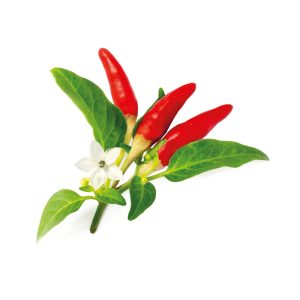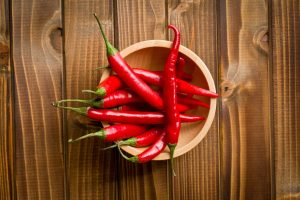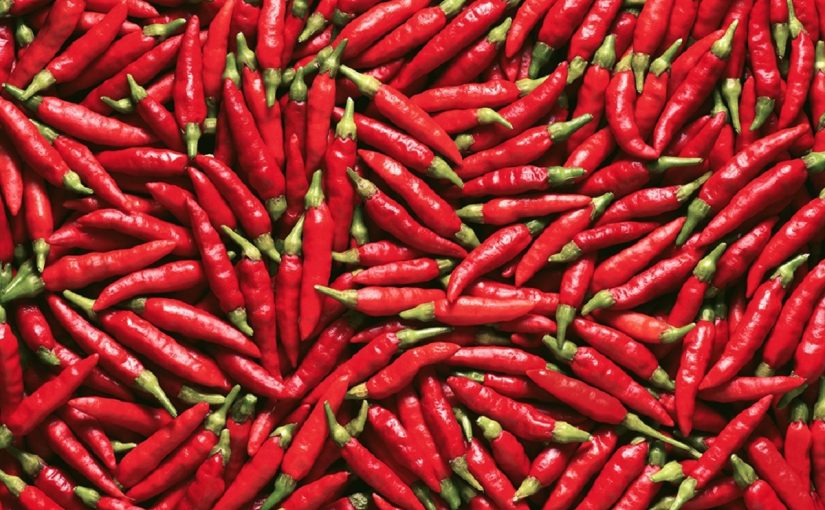11.02.2020
If you want to know the true colors and appreciate the Authentic Mediterranean Food, you have to discover the natural design and taste of Hot Red Chili Peppers from Calabria.
This intense red color can be found in Calabria, a fertile land, ingenious, rich, ravished by the scent of pines, of white firs and of sea weeds, friendly, but where nature often seems to challenge man with its wild contrasts between mountain and marine environment.
Its natural beauties of great value blend with typical specialities and here ‘Its Majesty’, Calabrian Hot Chili pepper, is palatable and enhances the most simple flavours, playing the role of lord and master.
These hot chili peppers are native to Calabria, Italy, in the southern part of the country. Calabrian chili peppers are considered the “classic” Italian hot pepper. The region of Calabria, Italy, is in the southern part of the country, in the “toe” of the boot.
Calabrian Chili Peppers are members of the nightshade botanic family, also related to tomatoes and to eggplants. The Mediterranean climate is ideal for these small, round, fruity and spicy peppers.
COLORS AND NUTRITIONAL FEATURES
The only thing bolder than their flavor is their rich red color. These Hot peppers has all varieties: small, big, spicy, fruity, smoky, sweet and salty.
Calabrian chili peppers, like other members of “Capsicum annuum” contain high amounts of vitamin C, higher than citrus.
Chili peppers also contain
- vitamins A and B-6,
- potassium,
- iron and
- magnesium.
The spicier hot peppers contain capsaicin, which has been shown to help stimulate the circulatory and digestive systems. Capsaicin is also researched for its potential as a cancer fighting drug.
THE SHAPE
Calabrian chili peppers are generally round, with a bulbous shape, approximately the size of a large cherry. They mature to a bright, glossy red and have a short, squat stem.
Calabrian chili peppers are available late summer through fall. During these seasons, Calabrian chili peppers develop the best spice and smoky fruit notes, when left to age and picked when they start to show a slightly red exterior.

They are considered a medium spicy chili pepper, ranging from 25,000 to 40,000 “Scoville” units (the measure unit of spicy taste).
The Calabrian chili pepper is a variety of Capsicum annuum native to Calabria, Italy and often found
- dried,
- pickled
- or stuffed and packed in olive oil.
It is a common component to all classic Italian antipasto platters. The small pepper is often referred to as the:
- Hot Calabrian chili pepper, small red cherry, and
- “Devil’s Kiss”.
Both they are the best known hot pepper in Italy. The preferred name in Italian is “Peperoncino Piccante Calabrese“, which translates the usual expression ‘Hot spicy pepper of Calabria’.
THE HISTORY
Very few people knows that Pepper varieties of Capsicum annuum originated in what is now Central and South America and the Caribbean, or what Christopher Columbus referred to as the “West Indies.”
It was Columbus, who brought the first peppers back from his travels, thinking they were related to black pepper, or Piper nigrum, one of the most coveted spices from the Indies.
Afterwards, from Spain and Portugal, varieties of Capsicum annuum spread across the Mediterranean (also Calabria) and across the Arabian Peninsula to India and then into China. RECIPES
RECIPES
A particular recipe is that of Hot Calabrian chili peppers traditionally stuffed with chunks of tuna and kept in jars of olive oil. These small, but spicy peppers are good for stuffing. The cooking will mellow the spicy taste, but the flavor of the pepper will enhance the internal stuffing of meats, anchovies and capers, or cheeses.
In Calabria, these small, round, spicy peppers are also stuffed with a mix of local tuna and bread crumbs, into jars of olive oil to preserve them. The peppers are packaged and sold online and at Italian specialty stores.
Calabrian chili peppers can also be pickled in a vinegar brine.
Here three simple recipes:
1. Remove the stem and top, scooping the seeds out with a spoon, then slice Calabrian chili peppers and sauté for topping burgers or steaks.
2. Chop Calabrian chili peppers and toss with spinach or broccoli and garlic for a quick sauté.
3. Use Calabrian chili peppers as a primary ingredient in “Pasta all’arrabbiata”, a dish of pasta with tomato sausage, rich of spicy peppers seeds.





 RECIPES
RECIPES